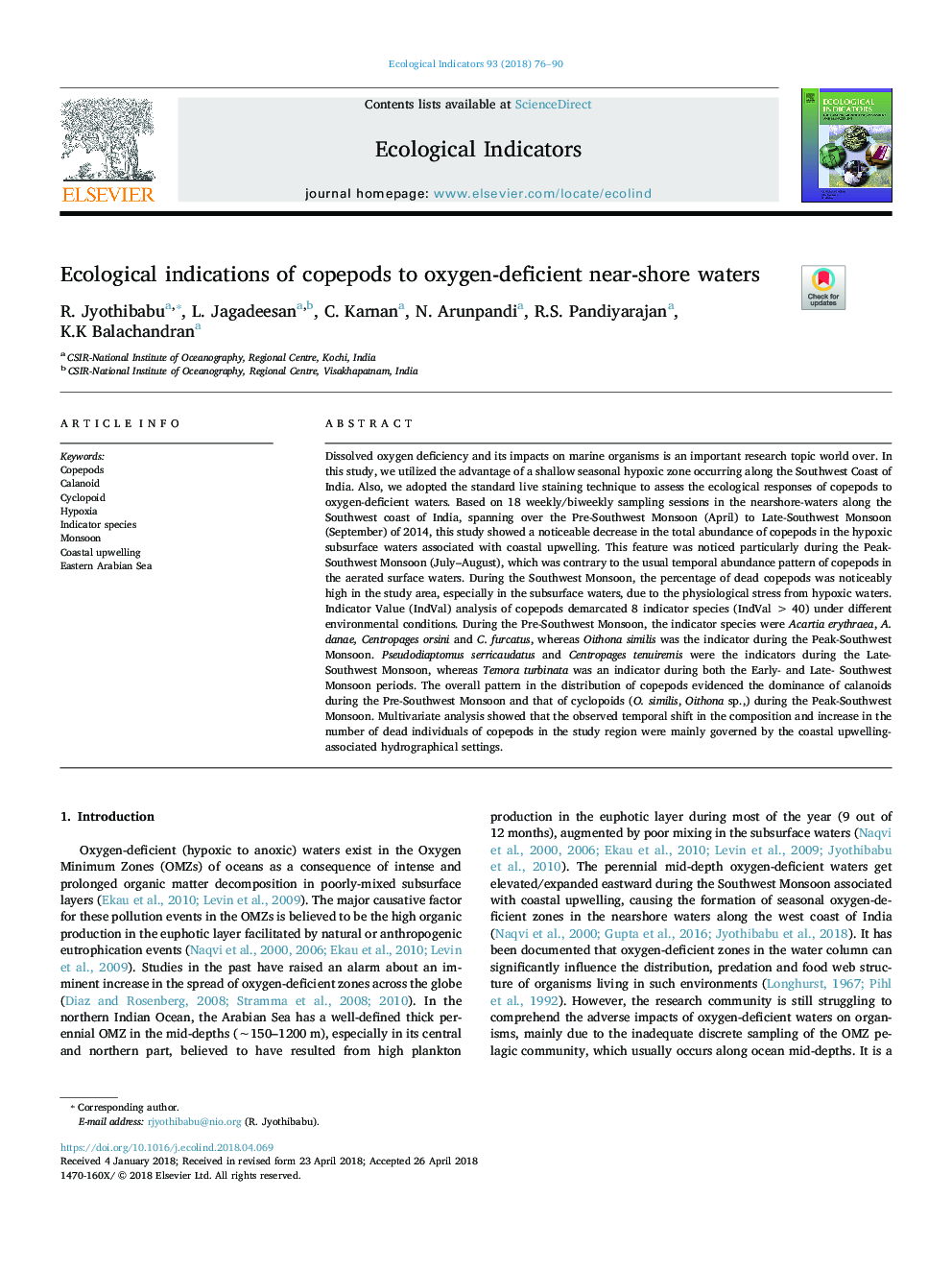| کد مقاله | کد نشریه | سال انتشار | مقاله انگلیسی | نسخه تمام متن |
|---|---|---|---|---|
| 8845094 | 1617109 | 2018 | 15 صفحه PDF | دانلود رایگان |
عنوان انگلیسی مقاله ISI
Ecological indications of copepods to oxygen-deficient near-shore waters
ترجمه فارسی عنوان
نشانه های زیست محیطی آبپروب ها به آبهای کمبود اکسیژن در نزدیکی ساحل
دانلود مقاله + سفارش ترجمه
دانلود مقاله ISI انگلیسی
رایگان برای ایرانیان
کلمات کلیدی
موضوعات مرتبط
علوم زیستی و بیوفناوری
علوم کشاورزی و بیولوژیک
بوم شناسی، تکامل، رفتار و سامانه شناسی
چکیده انگلیسی
Dissolved oxygen deficiency and its impacts on marine organisms is an important research topic world over. In this study, we utilized the advantage of a shallow seasonal hypoxic zone occurring along the Southwest Coast of India. Also, we adopted the standard live staining technique to assess the ecological responses of copepods to oxygen-deficient waters. Based on 18 weekly/biweekly sampling sessions in the nearshore-waters along the Southwest coast of India, spanning over the Pre-Southwest Monsoon (April) to Late-Southwest Monsoon (September) of 2014, this study showed a noticeable decrease in the total abundance of copepods in the hypoxic subsurface waters associated with coastal upwelling. This feature was noticed particularly during the Peak-Southwest Monsoon (July-August), which was contrary to the usual temporal abundance pattern of copepods in the aerated surface waters. During the Southwest Monsoon, the percentage of dead copepods was noticeably high in the study area, especially in the subsurface waters, due to the physiological stress from hypoxic waters. Indicator Value (IndVal) analysis of copepods demarcated 8 indicator species (IndValâ¯>â¯40) under different environmental conditions. During the Pre-Southwest Monsoon, the indicator species were Acartia erythraea, A. danae, Centropages orsini and C. furcatus, whereas Oithona similis was the indicator during the Peak-Southwest Monsoon. Pseudodiaptomus serricaudatus and Centropages tenuiremis were the indicators during the Late-Southwest Monsoon, whereas Temora turbinata was an indicator during both the Early- and Late- Southwest Monsoon periods. The overall pattern in the distribution of copepods evidenced the dominance of calanoids during the Pre-Southwest Monsoon and that of cyclopoids (O. similis, Oithona sp.,) during the Peak-Southwest Monsoon. Multivariate analysis showed that the observed temporal shift in the composition and increase in the number of dead individuals of copepods in the study region were mainly governed by the coastal upwelling-associated hydrographical settings.
ناشر
Database: Elsevier - ScienceDirect (ساینس دایرکت)
Journal: Ecological Indicators - Volume 93, October 2018, Pages 76-90
Journal: Ecological Indicators - Volume 93, October 2018, Pages 76-90
نویسندگان
R. Jyothibabu, L. Jagadeesan, C. Karnan, N. Arunpandi, R.S. Pandiyarajan, K.K Balachandran,
